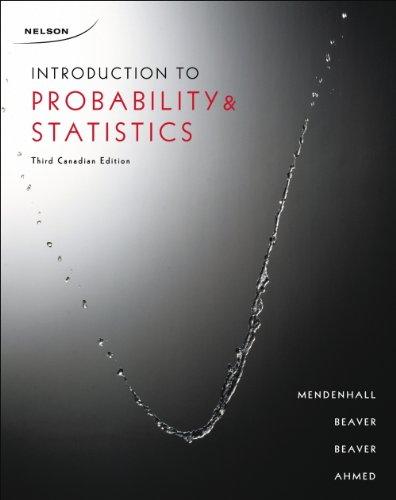Lung cancer remains the leading cause of cancer death for both Canadian men and women, responsible for
Question:
Lung cancer remains the leading cause of cancer death for both Canadian men and women, responsible for the most potential years of life lost to cancer. Lung cancer alone accounts for 28% of all cancer deaths in Canada (32% in Quebec). Most forms of lung cancer start insidiously and produce no apparent symptoms until they are too far advanced. Consequently, the chances of being cured of lung cancer are not very promising, with the five-year survival rate being less than 15%. The overall data for Europe show that the number of patients who are considered "cured" is rising steadily. For lung cancer, this proportion rose from 6% to 8%. However, there was a wide variation in the proportion of patients cured in individual European countries. For instance, the study shows that for lung cancer, less than 5% of patients were cured in Denmark, the Czech Republic, and Poland, whereas more than 10% of patients were cured in Spain.
a. Suppose a sample of 75 Quebecers was selected and it was found that 27 of them had died due to lung cancer. (i) Perform the appropriate test of hypothesis to determine whether the proportion of deaths in Quebec due to the leading cause (lung cancer) has changed. Test using = 0.05. (ii) Find the p-value for this test and interpret it. (iii) Construct a 95% confidence interval estimate of the population proportion of the premature cancer death in Quebec. (iv) Explain how to use this confidence interval to test the hypotheses.
b. Suppose two independent samples were taken. The following data were recorded: Number of deaths due to cancer = x = 47 Quebec: Rest of Canada: n = 150 n = 1000 Number of deaths due to cancer = x2 = 291 (i) Suppose the scientists have no preconceived theory concerning which propor- tion parameter is the larger and they wish to detect only a difference between the two parameters, if it exists. What should they choose as the null and alter- native hypotheses for a statistical test? (ii) What type of error could occur in testing the null hypothesis in (i), if Ho is false? (iii) Calculate the standard error of difference between the two sample proportions. Make sure to use the pooled estimate for the common value of true proportion. (iv) Calculate the test statistic that you would use for the test in (i). Based on your knowledge of the standard normal distribution, is this a likely or unlikely observa- tion, assuming that Ho is true and the two population proportions are the same? (v) Find the p-value for the test. Test for a significant difference between the pop- ulation proportions at the 1% significance level. (vi) Find the rejection region when a = 0.01. Using critical value approach, deter- mine whether the data provide sufficient evidence to indicate a difference between the population proportions.
(vii) Use a 95% confidence interval to estimate the actual difference between the cancer death proportions for the people in Quebec versus rest of the Canada. Summarize your findings.
c. To test the claim regarding proportion of cured cancer patients in Spain, a random sample of 500 patients yielded 39 who were cured. (i) State the appropriate null and alternative hypotheses. (ii) Calculate the value of the test statistic. (iii) Calculate the p-value and write your conclusion.
Step by Step Answer:

Introduction To Probability And Statistics
ISBN: 9780176509804
3rd Edition
Authors: William Mendenhall






